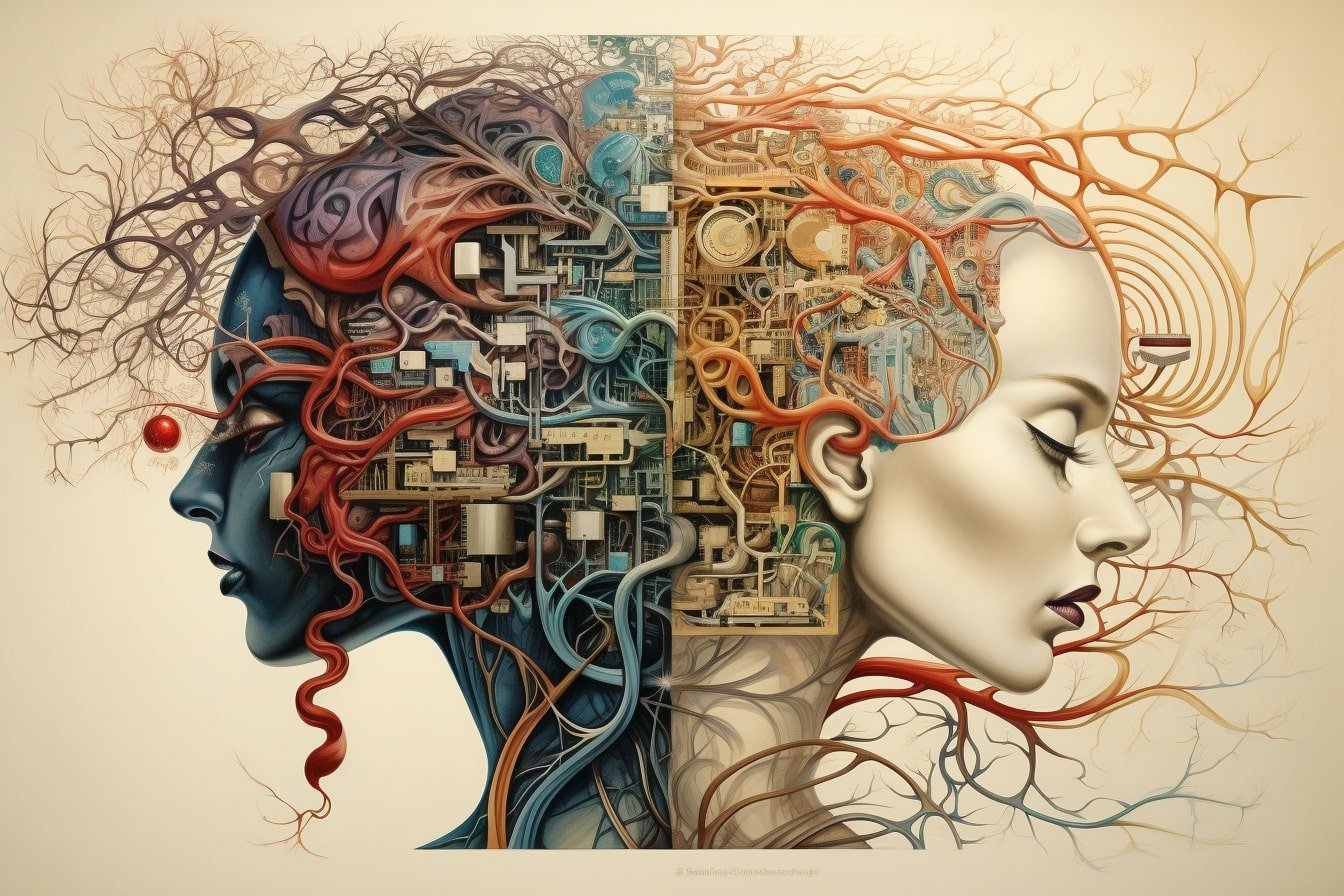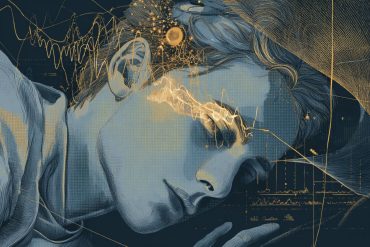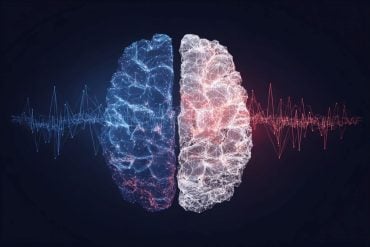Summary: Researchers have been studying hemispatial neglect, a condition where stroke patients fail to acknowledge what happens in the left side of their visual field, despite possessing intact visual abilities.
In a quest to uncover the intricate relationship between attention and conscious perception, neurologists identified five clusters of brain activity linked to the processing of attention. Their findings challenge existing theories that suggest attention and conscious perception are unrelated functions, providing evidence that the two indeed interact.
This opens up new avenues for understanding not only cognitive disorders but also the general nature of human consciousness.
Key Facts:
- Hemispatial neglect is a condition where patients are unaware of a part of their environment, not due to visual impairments, but due to attention issues.
- The researchers identified five clusters of electrical activity associated with the maintenance and redirection of attention in frontoparietal networks.
- The findings challenge current hypotheses that attention and conscious perception operate in isolation, providing supporting evidence of their interaction.
Source: Paris Brain Institute
Almost half of patients who experienced a stroke in the right cerebral hemisphere later develop a very unusual symptom: they lose the ability to perceive what is happening in the left side of space.
As a result, they tend to eat only the right side of their plate, ignore people on their left, and have great difficulty finding their way around. This disorder, known as hemispatial neglect, does not involve basic visual abilities, which remain intact.
“These patients see very well. The problem lies elsewhere! They are not aware of a part of their environment, not because they do not receive visual information, but because they are not paying attention to it,” describes Paolo Bartolomeo, neurologist, and researcher at Paris Brain Institute.
“The treatment of these patients consists, in a way, of re-educating their attention abilities.”
How could we possibly not be aware of elements of reality that we do perceive? To answer this question, we need to understand the nature of the relationship between consciousness and attention.
Researchers have been trying to formalize it for many years, but several competing theories coexist, none of which has prevailed.
To find out more, Paolo Bartolomeo and Jianghao Liu, a doctoral student in the PICNIC team, decided to put these theories to the test.
Gabor to starboard
“We wanted to describe the interactions between attention and conscious perception in the finer details, not only to elucidate attention disturbances in certain cognitive disorders but also to better understand human consciousness in general, ” explains Jianghao Liu.
“Clinical studies tell us that attention is necessary, though not sufficient, for conscious perception, but we didn’t know how this is translated in the brain. Thus, we tried to uncover the mechanisms of attention processing in frontoparietal networks.”
To shed light on these questions, the researchers focused on so-called exogenous attention, i.e., attention focused on environmental stimuli. Conventional neuroimaging techniques such as fMRI and EEG are insufficient to obtain precise data on brain activity during cognitive tasks.
The team, therefore, used intracerebral electrophysiological recordings from 13 epileptic patients who had been implanted with deep brain electrodes to treat drug-resistant epilepsy.
Participants in the study were asked to perform a cognitive task that involved detecting a target called a Gabor patch, which can become barely discernible by changing the contrast of the black and white bars composing it.
The target appeared on the left or right of a screen and was preceded by a visual cue (a simple black dot) – either correct (announcing the side on which the target appeared) or misleading (announcing the wrong side). In some cases, the Gabor patch did not appear at all.
Supporting neural evidence
“This experiment allowed us to determine that manipulating the participants’ attention via the visual cue could modify their ability to consciously perceive the Gabor patch and describe what they had seen,” explains Jianghao Liu.
“Their attention capacities were either inhibited or increased tenfold depending on the stimuli. At the same time, we observed that specific neural networks were involved in the different types of interaction between attention and conscious perception.”
More specifically, through electrophysiological recording, the researchers identified five clusters of electrical activity associated with the maintenance and redirection of attention in frontoparietal networks. They then used white matter tractography, an imaging technique, to encure that these clusters matched the architecture of anatomically observable neural projections.
Finally, they checked the robustness of these results using a computer model to ensure that the neural dynamics they observed were not specific to epileptic patients and could be generalized eventually.
“For the first time, we have been able to map the areas of the brain involved in the interaction between attention and conscious perception, says the researcher.”
“This is a great advance: certain current hypotheses claim that conscious perception and attention are two functions perfectly isolated from each other and rely on different networks. Our data shows the opposite.”
These interactions between attention and conscious perception most certainly shape our perception of the world, as our attention is constantly drawn to new events, big or small, in our immediate environment.
“Now we want to determine whether attention to endogenous events – in other words, events arising from our thoughts, our internal sensations, our inner life – could also affect consciousness,” concludes Paolo Bartolomeo.
“After all, our ability to pay attention to ourselves is as fascinating as our ability to perceive the rest of the universe.”
About this consciousness and perception research news
Author: Marie Simon
Source: Paris Brain Institute
Contact: Marie Simon – Paris Brain Institute
Image: The image is credited to Neuroscience News
Original Research: Open access.
“Fronto-parietal networks shape human conscious report through attention gain and reorienting” by Paolo Bartolomeo et al. Communications Biology
Abstract
Fronto-parietal networks shape human conscious report through attention gain and reorienting
How do attention and consciousness interact in the human brain? Rival theories of consciousness disagree on the role of fronto-parietal attentional networks in conscious perception.
We recorded neural activity from 727 intracerebral contacts in 13 epileptic patients, while they detected near-threshold targets preceded by attentional cues.
Clustering revealed three neural patterns: first, attention-enhanced conscious report accompanied sustained right-hemisphere fronto-temporal activity in networks connected by the superior longitudinal fasciculus (SLF) II-III, and late accumulation of activity (>300 ms post-target) in bilateral dorso-prefrontal and right-hemisphere orbitofrontal cortex (SLF I-III).
Second, attentional reorienting affected conscious report through early, sustained activity in a right-hemisphere network (SLF III). Third, conscious report accompanied left-hemisphere dorsolateral-prefrontal activity.
Task modeling with recurrent neural networks revealed multiple clusters matching the identified brain clusters, elucidating the causal relationship between clusters in conscious perception of near-threshold targets.
Thus, distinct, hemisphere-asymmetric fronto-parietal networks support attentional gain and reorienting in shaping human conscious experience.







